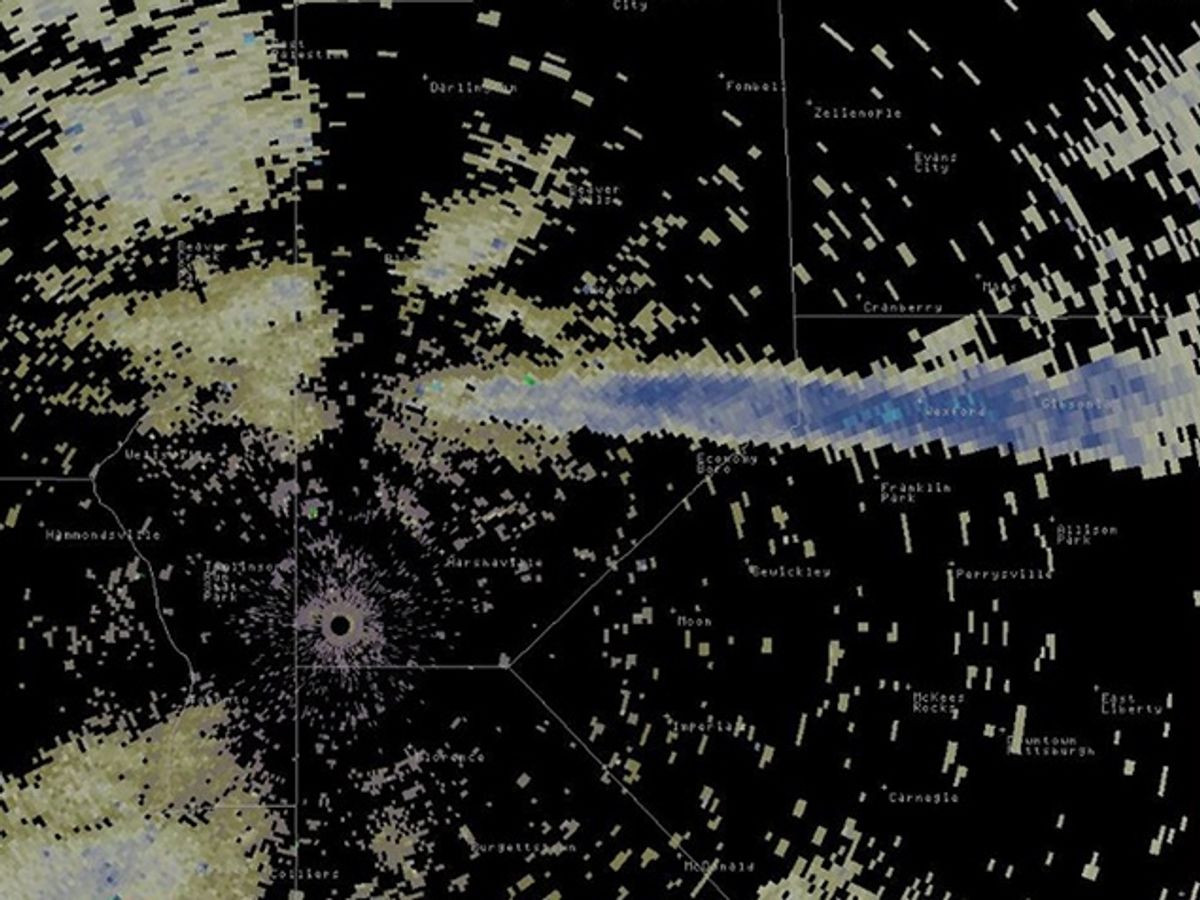It sounds a lot worse than it is. Happily, this isn't some science fiction movie about a post-apocalyptic Mad Max future, or even about radioactive rain. It's just a simple atmospheric interaction thanks to the water vapor coming out of nuclear plant cooling towers. If you live near a nuclear plant, maybe you've already noticed that the the weather is different downwind of it.
The National Weather Service posted a radar image on Tuesday of a single band of snow falling on Western Pennsylvania, straight downwind from the Beaver Valley Nuclear Power Station in Shippingport. A band of cold air moving across the eastern United States slammed into the very hot steam directly above the plant's cooling towers, creating clouds and precipitation that otherwise wouldn't have been there. Nuclear snow!
To be totally clear, though: the only thing that comes out of nuclear plant cooling towers is water vapor, so there is nothing dangerous about this phenomenon. And this has been observed before; the video below is from storm chasers who found themselves in a narrow band of extremely intense snow in Oklahoma City thanks to a nearby power plant. And two years ago, exhaust from the Martin Drake coal plant in Colorado Springs appeared to mix with cold air to produce clouds and light snow as well. Way back in 1976, researchers published a paper in Science on observed snowfall thanks to cooling towers, with accumulations of up to 2.5 centimeters. Complicating things, though, is another Science paper from 25 years later, showing that pollution from cities and industrial facilities including power plants can often have the opposite effect, with reduced cloud particle size and suppressed precipitation.
It's not just the water vapor that seems capable of producing snow; coal plants can manage this feat through slightly more nefarious means than a nuclear plant. A paper in Geophysical Research Letters from 1978 found that fly ash emitted from a coal plant in Colorado "inadvertently seeded supercooled fog and induced local snowfall." The ice nuclei in the snowfall contained silicon, aluminum, sulfur, calcium, and iron, which the paper's authors wrote are the hallmark of coal fly ash. Compared to that, nuclear snow doesn't sound so bad.
Image via National Weather Service
Dave Levitan is the science writer for FactCheck.org, where he investigates the false and misleading claims about science that U.S. politicians occasionally make.



